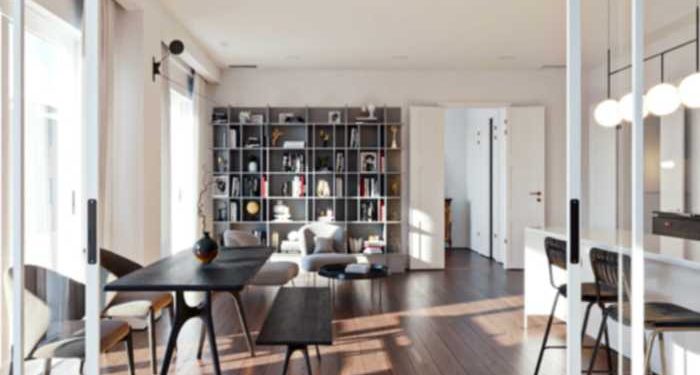In the world of architectural design and visualization, rendering plays a crucial role in bringing projects to life. With the advent of virtual reality technology, architects and designers now have a powerful tool at their disposal to explore, create and present their designs in a more immersive and engaging way. Virtual reality (VR) has rapidly gained popularity in various industries, including architecture, for its ability to provide a more realistic and interactive experience. In this article, we will explore the benefits of using virtual reality in architectural rendering and how it is revolutionizing the way projects are presented and experienced.
Rendering is the process of creating a photorealistic image or animation of a design using computer software. Traditionally, architects and designers rely on static 2D images or 3D models to present their designs to clients and stakeholders. While these methods are effective, they lack the immersive and interactive qualities that VR technology offers.
With virtual reality, architects can now create virtual tours of their designs, allowing clients to walk through and experience the space as if it were already built. This level of immersion not only helps clients better understand the design but also enables them to provide more accurate feedback and make informed decisions. By putting clients in the driver’s seat, architects can ensure that the final design meets their expectations and requirements.
One of the key benefits of using virtual reality in architectural rendering is the ability to detect design flaws and issues early in the process. By experiencing the design in a realistic and immersive environment, architects can identify potential problems with the layout, materials, lighting, and other elements that may not be apparent in traditional renderings. This early detection of issues can save time and money during the construction phase, as changes can be made before any physical work has begun.
Virtual reality also allows architects to experiment with different design options and configurations in real-time. By simply changing the materials, textures, colors, or layout of a space, architects can instantly see how these modifications affect the overall look and feel of the design. This level of flexibility and interactivity enables architects to explore creative ideas and solutions quickly and efficiently, ultimately leading to better design outcomes.
Another benefit of virtual reality in architectural rendering is its ability to engage clients and stakeholders on a deeper level. By providing a more immersive and interactive experience, architects can ensure that their designs are effectively communicated and understood by all parties involved in the project. Clients can feel more confident in their decision-making process when they can see and experience the design firsthand, leading to a smoother and more successful project delivery.
Virtual reality also offers architects the opportunity to showcase their work in a more compelling and captivating way. By creating virtual tours, flythroughs, or interactive presentations of their designs, architects can attract more clients and differentiate themselves from competitors. In today’s competitive architectural industry, the ability to leverage cutting-edge technology like virtual reality can give architects a significant edge in winning new projects and gaining recognition for their work.
In addition to its benefits for architects and designers, virtual reality in architectural rendering also offers advantages for other stakeholders involved in the construction process. Contractors, engineers, interior designers, and other professionals can benefit from experiencing the design in a more immersive and realistic way, allowing them to collaborate more effectively and provide valuable input and feedback.
Overall, virtual reality technology is transforming the way architectural projects are visualized, communicated, and experienced. By leveraging the power of VR in architectural rendering, architects can create more compelling and engaging presentations, detect design flaws early in the process, experiment with different design options, engage clients and stakeholders on a deeper level, and showcase their work in a more captivating way.
As virtual reality technology continues to evolve and become more accessible, its impact on the architectural industry will only continue to grow. Architects and designers who embrace VR in their practice will stay ahead of the curve and position themselves as leaders in the field. With its numerous benefits and potential applications, virtual reality is truly revolutionizing the way architectural projects are conceived, designed, and brought to life.
In conclusion, the benefits of virtual reality in architectural rendering are clear and compelling. By providing a more immersive, interactive, and engaging way to experience designs, VR technology is revolutionizing the way architects and designers work, collaborate, and present their projects. As the technology continues to advance, the possibilities for its applications in architectural design are endless. Rendering in virtual reality is not just a trend but a transformative tool that is reshaping the future of architecture.
For more information visit:

Cyan Virtual | Canadian architectural 3D rendering & animation firm
https://www.cyanvirtual.com/
21 LAWREN HARRIS SQUARE
“Cyan Virtual Architectural interior and exterior rendering, animation and virtual reality firm”
Step into a world where reality blurs with imagination at cyanvirtual.com. Embark on a journey through immersive virtual experiences that will leave you questioning what is real and what is just a figment of the imagination. Are you ready to explore the endless possibilities of the virtual realm? Join us at cyanvirtual.com and see for yourself.












